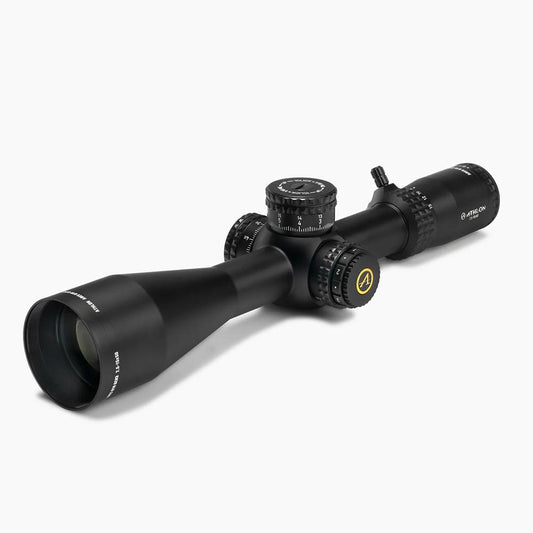

Athlon Ares BTR Gen 3 HD Rifle Scope 2.5-15x50 30mm FFP APLR13 MIL offers a dependable solution for shooters seeking precision and versatility. This scope features a magnification range of 2.5 to 15x, making it suitable for various shooting scenarios, from close-range to long-distance targets. With first focal plane technology, the reticle remains accurate at all magnification levels, allowing for precise holdovers. The illuminated reticle enhances visibility in low-light conditions, ensuring that you can identify your target even at dusk or dawn.
Engineered from aircraft-grade aluminum, this scope combines lightweight design with rugged durability. Its waterproof and fog-proof construction protects against environmental challenges, making it reliable for outdoor use. Easy adjustments and clear optics enhance your shooting experience, whether at the range or in the field. For those wanting performance without breaking the bank, the Ares BTR Gen 3 HD stands out as a reliable choice.
Features:
- HIGH DEFINITION OPTICS for superior image clarity, allowing you to spot your target with ease.
- VARIABLE MAGNIFICATION of 2.5-15x for flexible viewing options, adapting to your shooting needs.
- FIRST FOCAL PLANE RETICLE ensures accurate holdovers at any magnification level.
- ILLUMINATED RETICLE for enhanced visibility in low-light conditions.
- TOUGH CONSTRUCTION provides exceptional durability and shock resistance, suitable for all weather conditions.
- WATERPROOF & FOG-PROOF design protects against environmental factors, ensuring reliability.
- QUICK ADJUSTMENTS allow for rapid sighting adjustments in the field.
- LIGHTWEIGHT DESIGN makes it easy to carry, perfect for long hunting expeditions.
Technical Specifications Table
| Specifications | Details |
|---|---|
| Magnification | 2.5-15x |
| Objective Lens Diameter | 50mm |
| Tube Diameter | 30mm |
| Weight | 25.5 oz |
| Length | 15.5 in |
| Material | Aircraft-grade aluminum |
What’s in the Box?
- Lens covers
- Padded case
- Neck strap
Customer Reviews
"A solid scope that performs exceptionally well in low light!"
"The first focal plane reticle is a game-changer for long-range shooting."
"Really impressed with the clarity and ease of adjustments."
FAQ
Buyers often inquire about how the Athlon Ares BTR Gen 3 HD compares to similar high-end scopes. This model offers exceptional value, combining advanced features such as high-definition optics and a durable build at a competitive price point, making it a preferred choice for both casual and serious shooters.
For maintenance, simply clean the lenses and store the scope in a protective case when not in use. When compared to other brands, the Athlon Ares BTR Gen 3 HD delivers comparable quality without the high price tag, appealing to those seeking performance without overspending.
Similar Models
Looking for more great optics? Discover our extensive Athlon lineup, including the Athlon Argos BTR 6-24x50 for long-range precision and the Athlon Midas BTR 3-18x50 for versatile shooting options. Explore our full collection for exceptional optics tailored to your adventures.
You May Also Like
Here’s some of our most similar products people are buying. Click to discover trending style.






